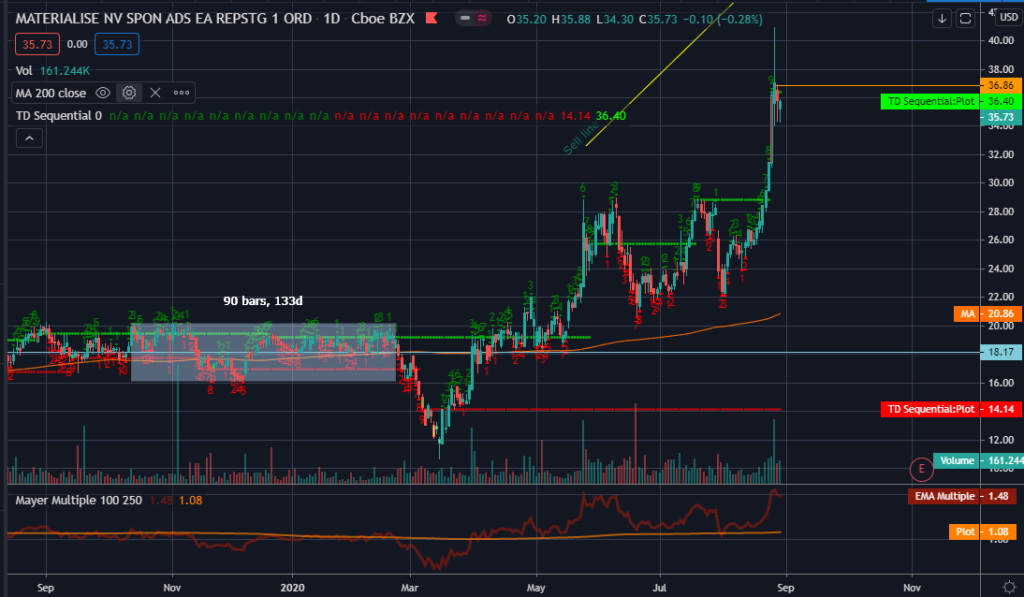More DeFi madness.
Well I learned quite a bit about DeFi today, and things really escalated quickly after I succumbed to a bit of FOMO. Thankfully I didn’t go too crazy.
I’d been seeing news earlier in the day that Uniswap, a ERC-20 DEX had broken $500 million in volume, and then read some info about SushiSwap, which is basically going directly after Uniswap. Uniswap operates by providing fees back to liquidity providers. Then this tweet happened:
And that’s exactly what SushiSwap is.
The developer behind SushiSwap, the anon Chef Noni, describes it as Uniswap with Sushi tokenomics. LPs are provided with rewards in Sushi tokens, but the main difference with UniSwap is that LPs can withdraw their capital and still earn rewards by holding Sushi later on. Right now, they’re just stealing liquidity directly from Uniswap, but the plan is to launch their own native pool in the coming weeks. In the meantime, as an early mover advantage, they are providing 10x staking bonuses to LPs, and another 5x to those that stake the SUSHI-ETH Uniswap pool.
The project launched just 72 hours ago, and already has $57m in liquidity with over $99m in volume. The SUSHI itself has gone from $0.90 to $6.00 in that time. The context here of course is YFI and other DeFi tokens that have had 10,000% gains in the last month. Could SUSHI see a run like this?
Obviously, the risk/reward here for a small stake seems immense, so I decided to give it a shot and see what is going on. SUSHI was trading around five or six dollars earlier, so I decided to throw some ETH at it. I made a bit of a mess at it, but I eventually got it figured out.
In order to be an LP on Uniswap, one has to provide equal amounts of assets on all sides of the pools. In most cases, it’s just two tokens, like ETH and DAI, but in others it might be three or even four tokens. After pooling your assets you’ll be provided with the relevant Uniswap token for the pool.
Of course the point to these pools in the first place is to facilitate swapping between the pool currencies in the first place, so the first thing I did was use Uniswap to purchase SUSHI. I wanted to stake in the highest paying pool, which is the SUSHI-ETH one. You can follow along with this guide here, but please check the contract addresses before sending any funds. The SUSHI token contract address can be verified here.
From there it was just a matter of adding my newly acquired SUSHI to the pool along with an equivalent amount of ETH. And this is where I messed up. Uniswap attempts to calculate the exchange rate between the two currencies before sending the transactions, but the volatility of SUSHI was too much for Uniswap’s default slippage percentage of one percent. My first two attempts at the conversion failed, wasting about ten dollars in ETH, before I raised the slippage to ten percent and it went through, giving me SUSHI-ETH Uniswap tokens.
I now was an LP in the same pool that I had just used minutes earlier to exchange my ETH for SUSHI in the first place. The conversion was not one-to-one; five SUSHI and equivalent ETH netted me 0.540 LP tokens.
The next step was to stake my SUSHI-ETH LP tokens in SushiSwap. This also took a fair amount of gas, but managed to go through at a fairly low rate. All in all I staked sixty dollars between ETH and SUSHI, and over twenty dollars in gas.
I’ll admit I got really wrapped up into a severe case of FOMO while setting all this up. Thankfully I’ve calmed down and managed to refrain from any additional buy-ins. DeFi is moving very, very fast, and I found myself in bit of a mania today. Thankfully I’ve managed to limit my exposure to just a hundred dollars.
Still the urge to go and swap a couple hundred dollars of stable coin or ETH is still there at the back of my mind. I just have to keep telling myself: risk management risk management risk management. I might wake up tomorrow and find SUSHI up 10x, or down to pennies. Either way, things are moving so fast right now that I’m sure there will be plenty of opportunities to deploy more capital in other projects. The last thing I want is to run out of dry powder this early in the game.
I’ve been so obsessed with the price of BTC the last few weeks. DeFi is the only thing that’s managed to keep my attention off of it for half a day or more, but it’s fueled a whole other obsession. We’ve still got four whole months left in 2020 and it seems like it’s going to be a doozy.


